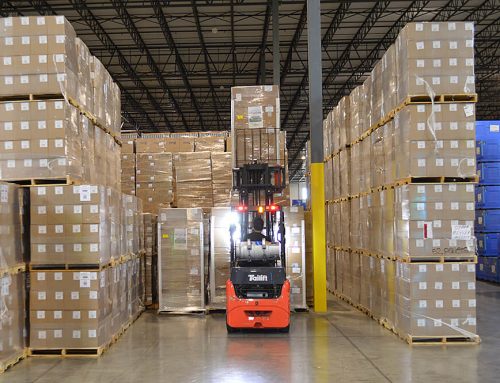Inbound logistics is a key part of the supply chain that focuses on getting goods, materials, and supplies from suppliers to businesses. It includes everything from sourcing materials to transporting, storing, and managing inventory. A well-organized inbound logistics process helps companies to keep operations running smoothly, reduce costs, and meet customer demands on time.

Key Parts of Inbound Logistics
A well-structured inbound logistics process ensures that materials, products, and supplies arrive on time and in good condition. Let’s take a closer look at the five key components of inbound logistics and how they contribute to an efficient supply chain.
Sourcing and Procurement
Sourcing and procurement involve identifying, evaluating, and selecting suppliers that provide raw materials, components, or finished goods. This process includes negotiating contracts, setting delivery terms, and ensuring suppliers meet quality and compliance standards.
Strong supplier relationships are essential because they help prevent supply chain disruptions and ensure businesses get the best value for their purchases. Companies often use strategic sourcing techniques, such as bulk purchasing or multi-supplier agreements, to secure reliable supply lines.
Transportation Management
Once sourced, materials must be transported from suppliers to warehouses, distribution centers, or manufacturing facilities. Transportation management focuses on selecting the best shipping methods, coordinating logistics providers, and optimizing routes to minimize costs and transit times.
Businesses must also factor in fuel costs, regulatory requirements, and unexpected delays, such as weather or traffic issues. Effective transportation management helps prevent bottlenecks and keeps the supply chain moving smoothly.
Receiving and Quality Control
When shipments arrive, they must be received, inspected, and verified against purchase orders to ensure accuracy. Quality control checks help identify any defective or incorrect products before they are added to inventory.
This step is critical because accepting faulty or incomplete shipments can disrupt production schedules or lead to customer dissatisfaction. Some companies use barcode scanning, RFID tracking, or automated sorting systems to speed up the receiving process and reduce errors.
Warehousing and Storage
After quality checks, goods need to be stored in a way that maximizes space efficiency and ensures easy retrieval. Proper warehousing strategies involve organizing inventory based on demand, implementing climate-controlled storage for sensitive products, and using warehouse management systems (WMS) to track stock levels.
Depending on the type of goods being handled, businesses may use different storage methods, such as pallet racking, shelving, or automated storage systems. Efficient warehousing helps companies avoid unnecessary handling, reduce storage costs, and improve order fulfillment times.
Inventory Management
Keeping the right balance of inventory is crucial for avoiding shortages or excess stock. Too much inventory ties up capital and increases storage costs, while too little can lead to delays and missed sales. Inventory management includes demand forecasting, setting reorder points, and using technology like inventory tracking software to monitor stock levels in real time.
Businesses often implement inventory strategies to minimize waste and ensure materials arrive when needed. Strong inventory management practices help businesses operate more efficiently and reduce overall supply chain costs.
Challenges in Inbound Logistics
Businesses face several challenges when managing inbound logistics:
- Supplier reliability: If suppliers delay shipments or send poor-quality materials, it can disrupt operations.
- Cost management: Shipping, storage, and inventory costs can add up quickly, so businesses must find ways to control expenses.
- Complex coordination: Many suppliers, carriers, and teams are involved in the process, making it important to have strong communication and planning.
Inbound logistics is essential for keeping a business running smoothly. By efficiently managing sourcing, transportation, receiving, warehousing, and inventory, companies can reduce costs, prevent supply chain disruptions, and improve overall productivity. Each of these key parts plays a crucial role in creating a streamlined supply chain that ensures materials and products arrive on time and in good condition. Investing in strong logistics strategies not only enhances efficiency but also provides a competitive advantage in the market.




